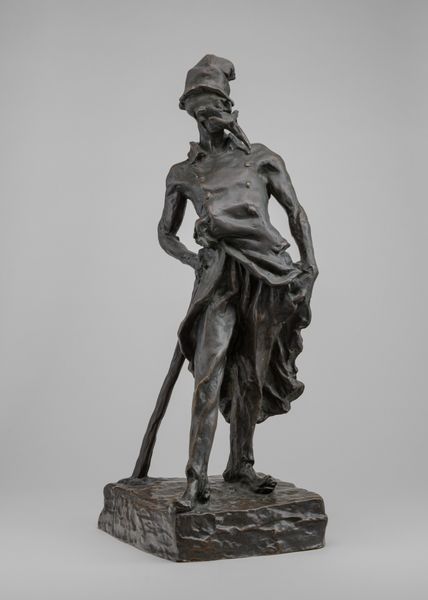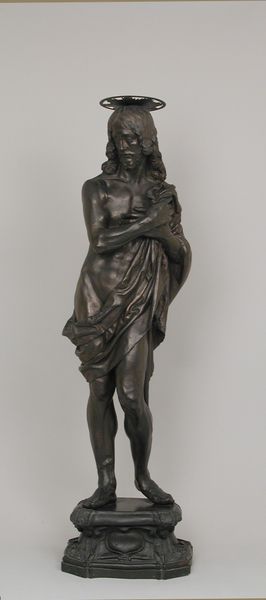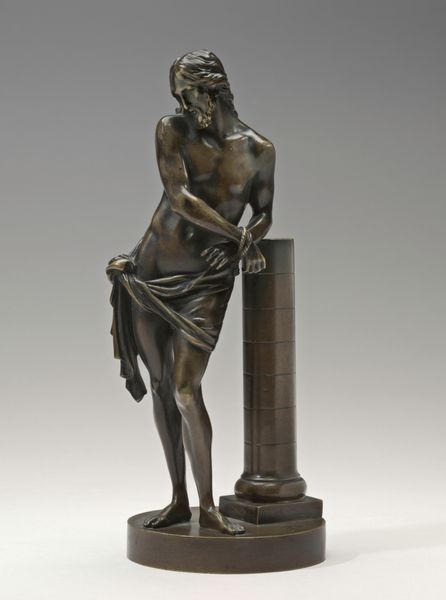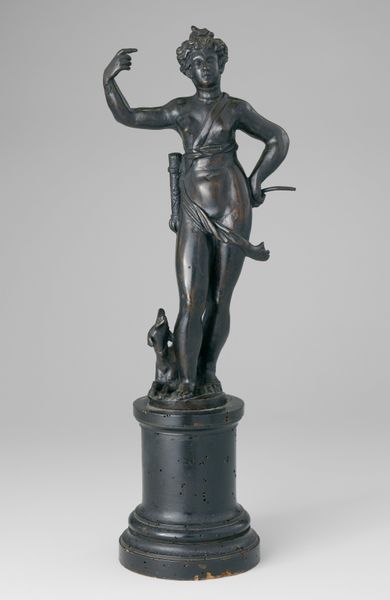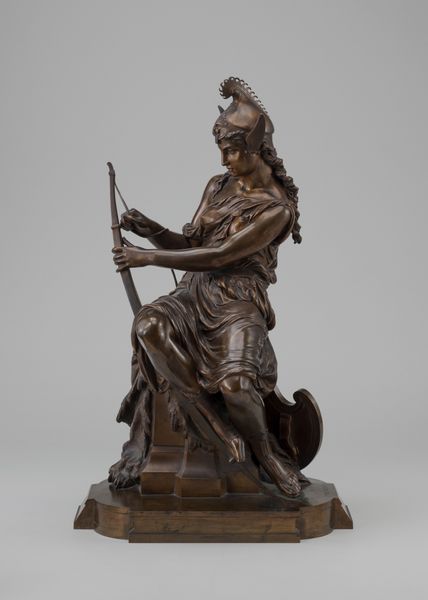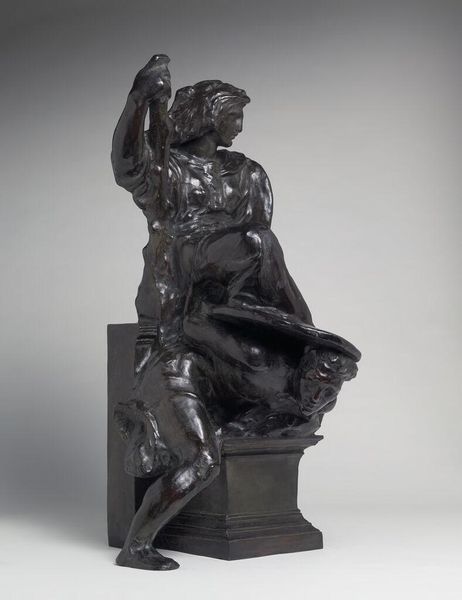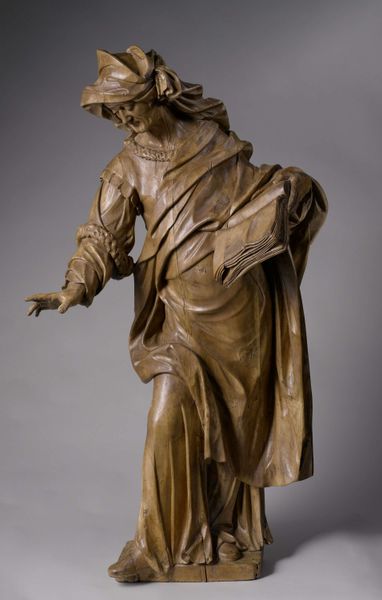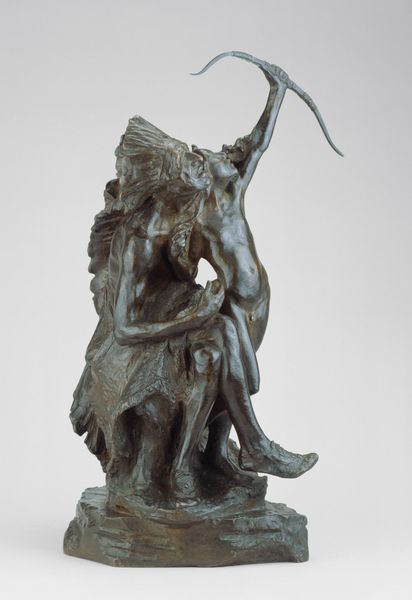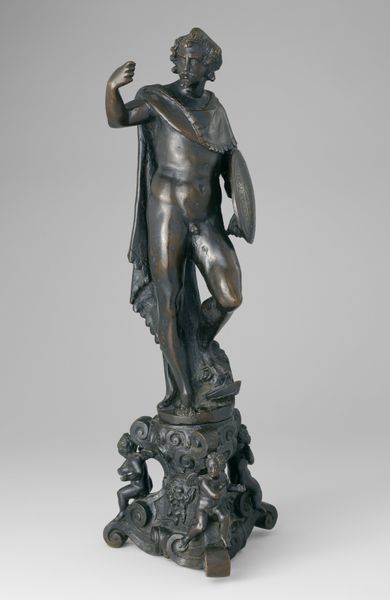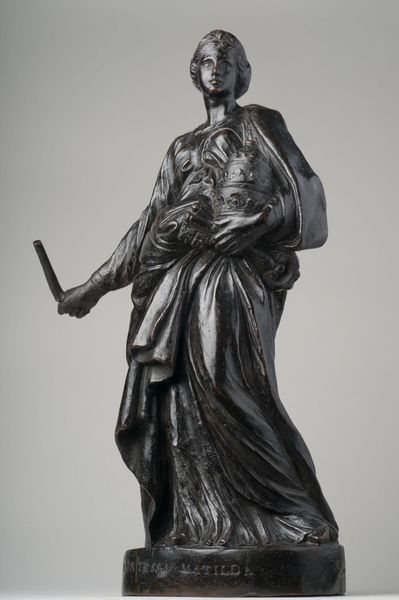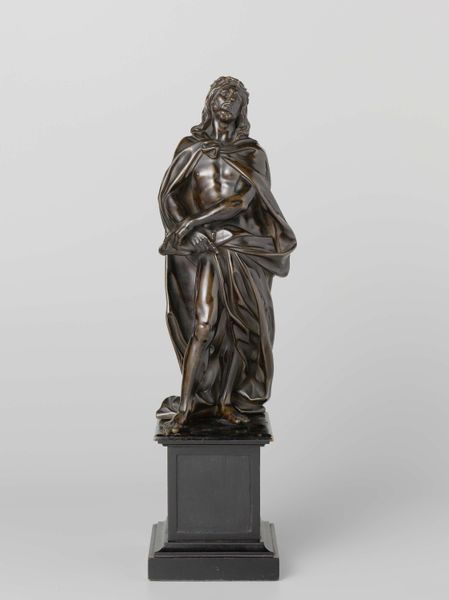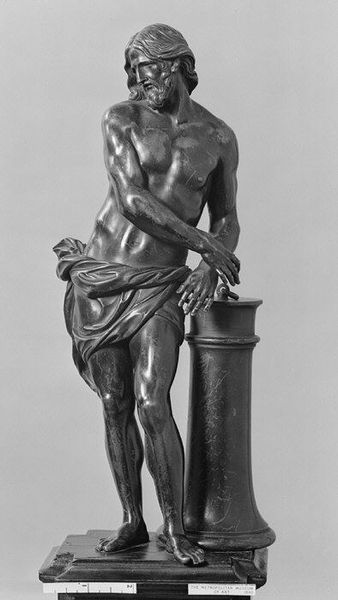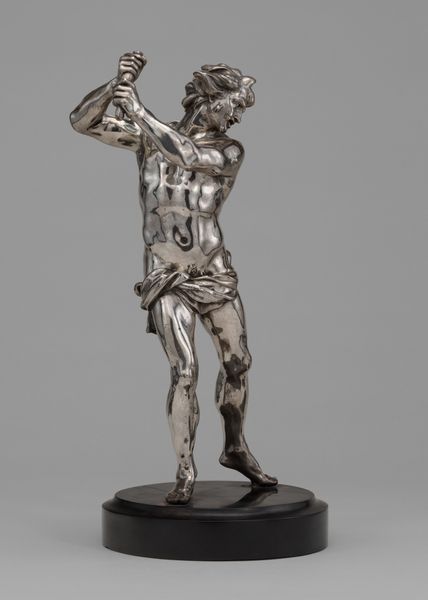
bronze, sculpture
#
stone
#
sculpture
#
bronze
#
figuration
#
sculpture
#
history-painting
#
decorative-art
#
italian-renaissance
Dimensions: Height: 41 in. (104.1 cm)
Copyright: Public Domain
Curator: Standing before us is Giambologna’s bronze sculpture, "St. John the Baptist," a work dating roughly between 1800 and 1894. It's an evocative example of Italian Renaissance artistry here at the Met. Editor: Immediately, I'm struck by the sheer physical presence of the piece. It feels weighty, earthy... that bronze positively glows under the gallery lights, doesn't it? There’s something captivating in the patina, telling tales of touch, time, and the labor that brought him into being. Curator: Absolutely. Giambologna really captured something essential about the Saint—a blend of strength and vulnerability, wouldn’t you say? He’s a figure both divine and very much human. Editor: The humanity fascinates me. Consider the bronze itself: the act of mining, smelting, casting. Someone poured their sweat, and skill into this. The value judgments between "art" and industry simply dissolve before an object with such rich social history embedded in its very making. What purpose would Saint John serve to those people during the late stages of the Renaissance, considering he's depicted in near-undress, standing in nature? Curator: He would likely have served the dual function of providing a meditative tool, as well as an example. Note that John extends his hand, presenting something unseen to us. He might be gesturing toward us to repent, be mindful, be a changed person for the better through an act of worship with his sculpture. He acts as an emotional and symbolic medium to guide people to repentance in the viewer. Editor: See, now you are making me consider my role in consumption when engaging in this image... Giambologna utilized these bronzes for various artworks throughout the Renaissance; the same bronzes used for the production of cannon, which served the Republic of Venice throughout various naval encounters. Who might have held him in his lifetime, for how long, and under what conditions would make any study on this piece a potentially bottomless and endless task! Curator: Yes! And thinking about the artists’ own context and relationship with material shifts our experience and expectations of the artwork in a powerful way. Editor: Looking again, the artist's fingerprints and history are undeniable here. Curator: It’s interesting to consider all of this as the artwork prompts a great journey in time!
Comments
No comments
Be the first to comment and join the conversation on the ultimate creative platform.
